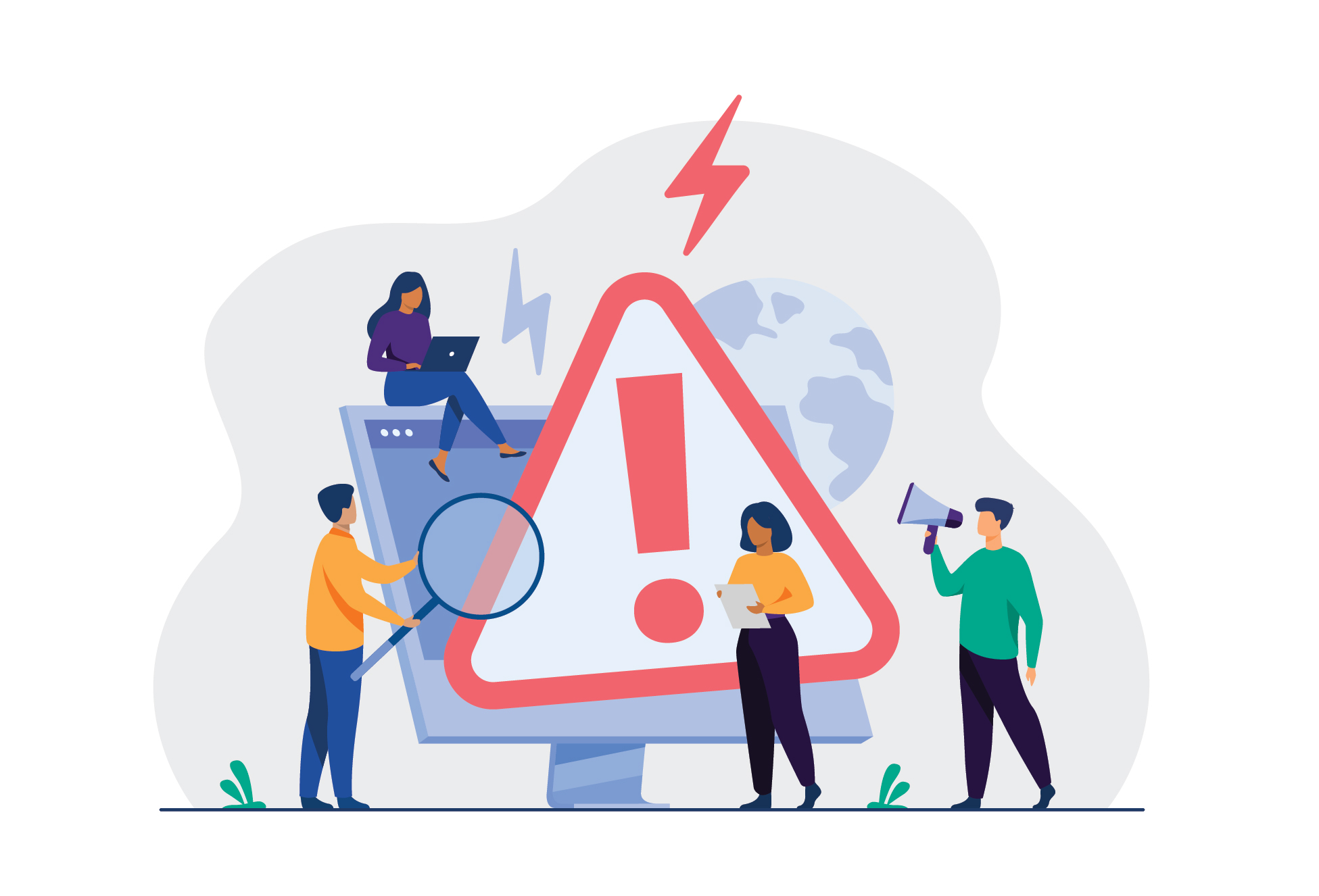Technology problems can be a significant challenge for any business. The key to keeping operations running smoothly is preparing for them and handling them efficiently when they arise.
To help your business plan ahead for any outages, glitches, or threats, here are some of the most common technology issues that small businesses face and tips for addressing them.
- Security risks – Cyber security threats can come from many sources, and they’re not as easy to catch as you think. It’s crucial to have measures in place to protect your small business’s online presence and information.
The solution: Small businesses can prevent cyberattacks by investing in a cybersecurity strategy. Firewall software can block malicious traffic through your business’s network, and multi-factor authentication can help you ensure that only your team can access your business’s digital accounts. If your team accesses business data on their mobile devices, consider setting up mobile device management to implement security features on those devices. It can also be helpful to conduct cybersecurity training with your team so that they know about threats to look for and how to avoid them.
- Outdated technology – It’s natural to become loyal to things that are familiar, and technology is no different. Once you’ve grown accustomed to your devices, it’s tempting to put off upgrading them forever. But once frequent crashes, slower performance, and clashes with modern software begin, keeping old technology can become an efficiency, productivity, and security problem for your small business.
The solution: Regularly assess your business’s technology for speed, strength, and security. When you begin to see issues in these areas, or if you have older technology and some room in your business budget, it’s time to consider an upgrade. Cloud-based solutions for data storage can be useful for keeping up with business growth and saving money.
- Data isn’t backed up – Data loss due to outages or crashes can be devastating for a business and challenging to recover from. It’s essential that all data is stored on multiple sources in the event of a disaster.
The solution: Implement automated data backup processes so that data is backed up without employees having to do so manually. You can also store data using multiple sources, such as cloud storage or external hard drives. Create data restoration plans for if a crash does occur and test them regularly to make sure they work.
- Missed system updates – System updates are key for keeping your small business’s technology current and running effectively. Skipping routing updates can cause glitches and slower performance or expose vulnerabilities to cybersecurity threats.
The solution: Enable automatic updates for operating systems and software applications, and regularly check for firmware updates on hardware. You can also plan routine maintenance to ensure that all systems are up to date.
- Scalability – As your small business grows, its technology will need to grow, too. It’s important to choose technology that can handle your business’s changing needs, but not all systems are flexible enough to do so.
The solution: Choose technology from the start that can handle your business’s expansion. As mentioned before, cloud-based solutions may be preferrable because they allow easy adjustments to accommodate increased workloads.
- IT compliance and regulations – Businesses must adhere to the regulations, laws, and industry standards that exist regarding their technology usage. Businesses that don’t remain compliant may hurt their reputations, lose their licenses, and face penalties and fines.
The solution: Regularly examine industry regulations and, when possible, consult IT experts to check your compliance status. It might also be beneficial to invest in tools that automate compliance. These tools continually monitor regulations and conduct real-time audits to confirm that a business meets all standards.
- Employee technology adoption – New technology is most successful when all employees embrace it and know how to use it to its full potential. People may be hesitant to switch to new systems if they’re intimidated by technology with which they’re unfamiliar.
The solution: Train your team on new technologies when you introduce them and regularly afterward. Monthly or quarterly training can cover tips and tricks for maximizing new technologies and useful tools within them that your team may not know about.
By planning ahead for problems and knowing their solutions, technology can be a valuable asset for your small business rather than a liability.

